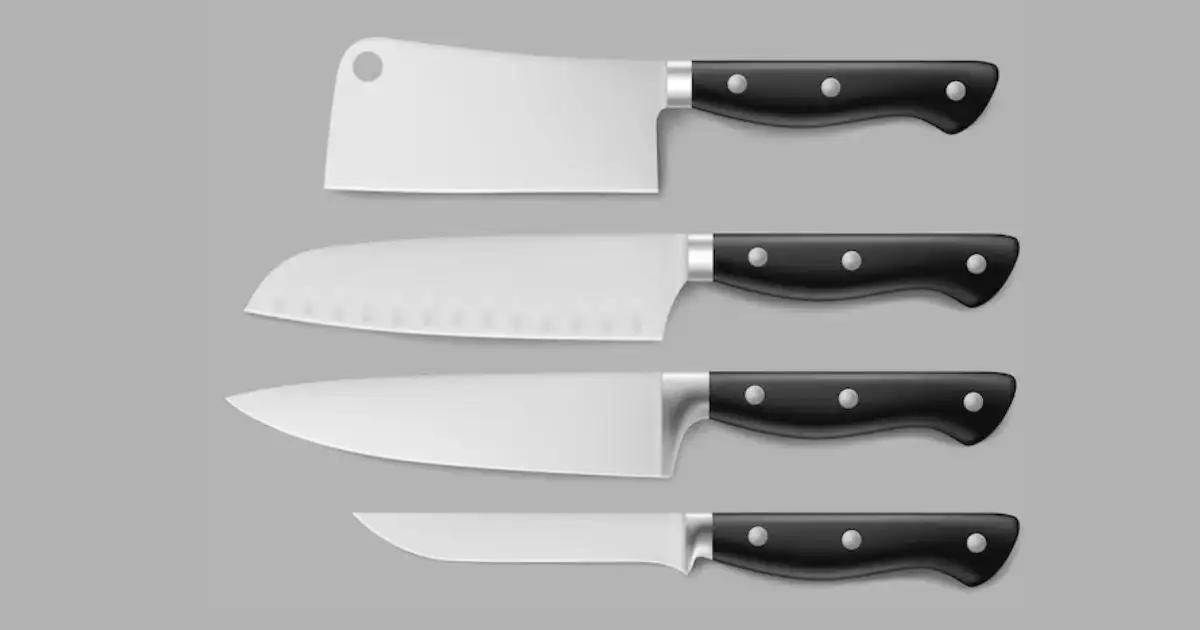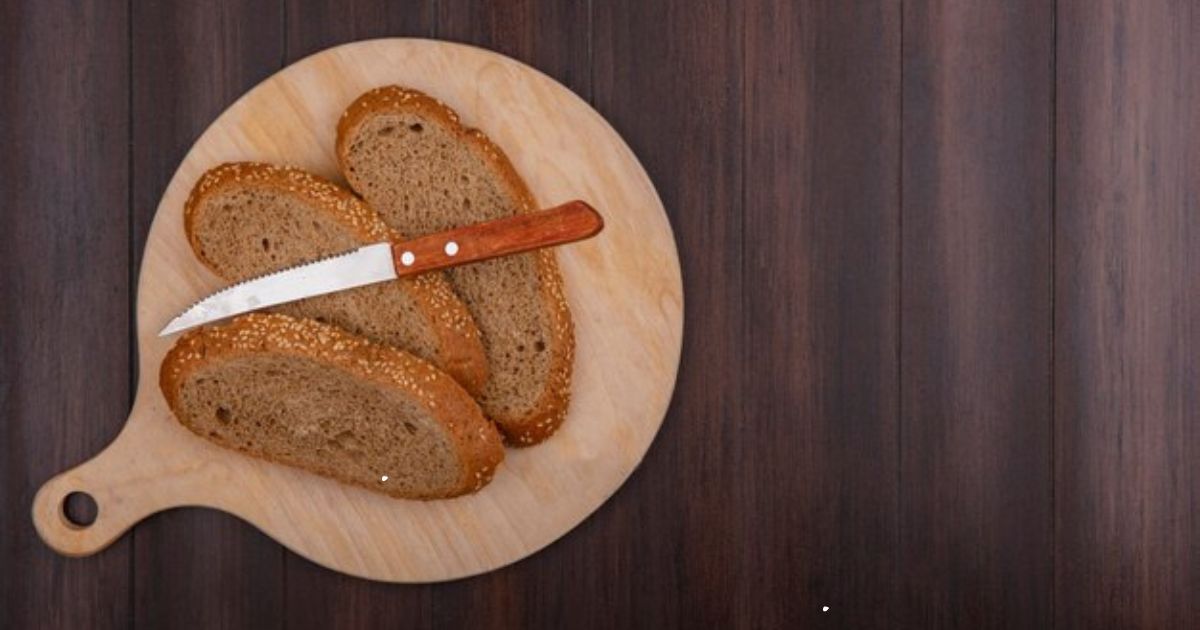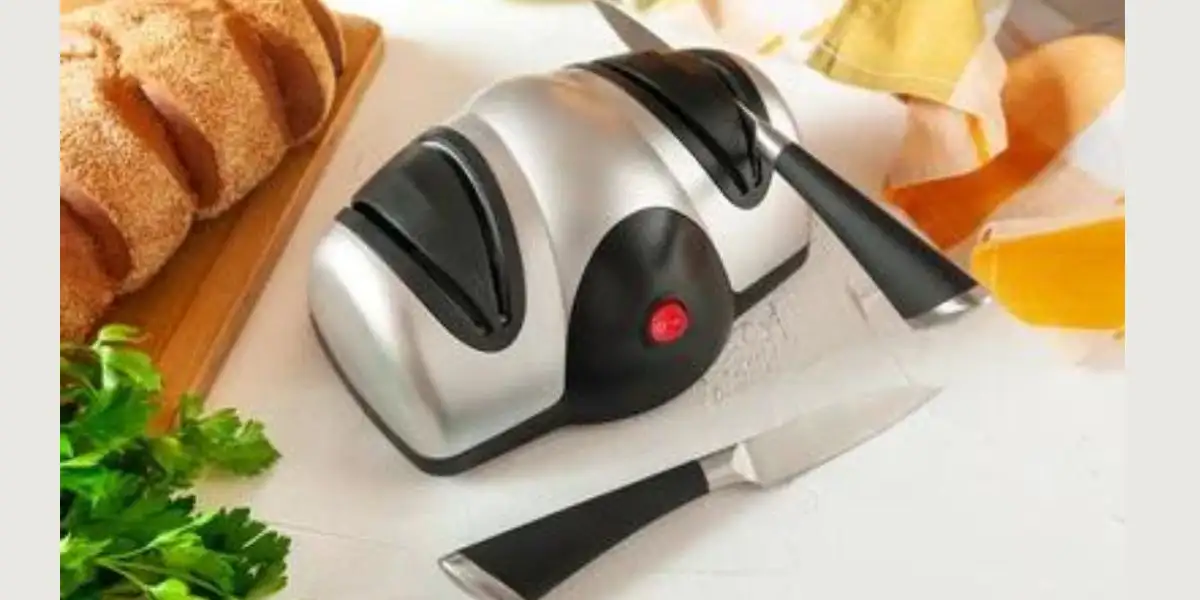Unveiling the Mystery: Why Do Knives Have Holes in the Blade?
Table of Contents
ToggleIntroduction:
In the vast realm of culinary arts, survival skills, and everyday tasks, one tool stands out as a timeless companion—the knife. This seemingly simple instrument has undergone centuries of evolution, adapting to diverse needs and cultural nuances. Amidst the myriad designs and features that knives boast, a peculiar characteristic often catches the eye—the presence of holes in the blade.
In this exploration, we embark on a journey to demystify the enigma behind the holes in knife blades. What purpose could these seemingly decorative voids serve, and why do they persist across various types of knives?
why are there holes in the Knife blade?
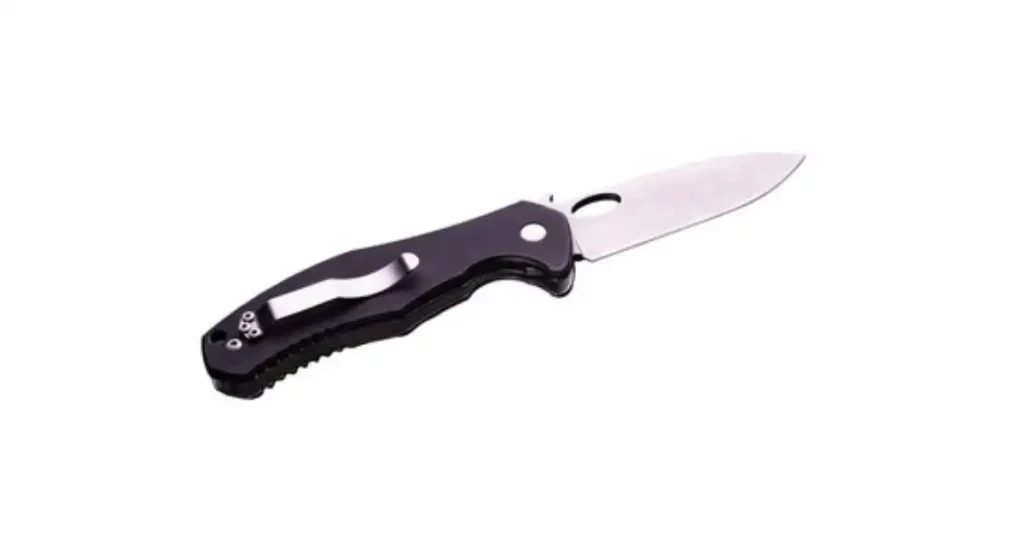
In the intricate world of blades and cutting implements, where form often aligns seamlessly with function, there exists a fascinating and enigmatic feature that sets certain knives apart—the presence of holes in their blades. This exploration takes us beyond the surface, delving into the historical roots, cultural influences, and nuanced functionalities that have shaped the evolution of knives with holes.
From ancient blades wielded by our ancestors to the cutting-edge designs of contemporary bladesmiths, these holes have persisted through time, leaving a mark on the diverse landscape of knife craftsmanship. As we venture deeper into the heart of this peculiar feature, we invite you to join us in uncovering the secrets behind the holes in knife blades, revealing the stories they tell about the art and science of blade design. Welcome to a journey where every perforation holds a tale, and each blade tells a unique story of form, function, and the ever-evolving craft of cutting-edge design.
What are the origins of knives with holes?
The origins of knives with holes can be traced back to ancient times, when humans first began crafting and using tools. The incorporation of holes in knife blades was likely driven by practical considerations and the evolving needs of different cultures. While it’s challenging to pinpoint the exact moment or civilization where this feature originated, several factors contribute to the historical development of knives with holes:
Multi-Functional Tools:
- Early knives were versatile tools used for various purposes, including cutting, hunting, and preparing food. The addition of holes could have served multiple functions, making the knife adaptable to different tasks.
- Holes might have facilitated alternative uses such as spear attachment, allowing the knife to serve dual purposes in hunting and combat scenarios.
Aesthetic and Symbolic Considerations:
- Cultural and symbolic significance often played a role in the design of tools. The addition of holes might have held cultural or religious meaning in specific societies.
- Some cultures incorporated decorative perforations as a way to distinguish their knives, making them unique and recognizable within the community.
Ventilation and Resource Conservation:
- In regions where knives were essential for daily survival, such as in agriculture or nomadic lifestyles, holes in blades could have served a practical purpose.
- Ventilation provided by the holes might have been advantageous in environments where moisture and debris could accumulate on the blade, contributing to rust or corrosion.
Evolution Over Time:
- As metalworking techniques advanced, the functional and aesthetic aspects of knives evolved. The presence of holes could have persisted as a traditional design element or continued to serve practical purposes in specific applications.
What is the evolution of knife design and functionality?
The evolution of knife design and functionality is a fascinating journey that spans thousands of years, reflecting advancements in technology, changes in societal needs, and the development of diverse cultures. The following overview outlines key milestones in the evolution of knife design and functionality:
Stone Age: Early Tools:
- In the Stone Age, early humans crafted knives primarily from materials like flint, obsidian, or bone. These tools were essential for hunting, food preparation, and other basic tasks.
- The design of these early knives was rudimentary, consisting of a sharpened edge attached to a handle.
Bronze Age: Technological Advancements
- With the advent of metalworking during the Bronze Age, knives transitioned from stone to metals like copper and bronze.
- Blades became more durable and efficient, allowing for improved cutting capabilities.
Iron Age: Increased Versatility
- The Iron Age saw the widespread use of iron and steel for knife production, resulting in even more durable and versatile blades.
- Different cultures developed specialized knives for specific tasks, such as combat knives, utility knives, and kitchen knives.
Middle Ages: Ornate and Specialized Designs:
- During the Middle Ages, knives became symbols of status and wealth. Elaborately decorated knives were common among the nobility.
- Specialized designs emerged, including the development of folding knives and pocket knives.
Renaissance: Refinement of Craftsmanship:
- The Renaissance marked a period of refinement in craftsmanship. Artistry and precision became essential elements of knife design.
- The emergence of the table knife as a distinct utensil for dining reflected societal changes in eating habits.
18th and 19th Centuries: Industrialization:
- The Industrial Revolution brought significant changes to knife production. Mass production techniques allowed for more affordable knives.
- The pocket knife gained popularity as a practical everyday tool, and specialized knives for butchering and outdoor activities were developed.
20th Century: Advancements in Materials:
- The 20th century witnessed innovations in materials, with the introduction of stainless steel, high-carbon steel, and other alloys.
- Folding knives, switchblades, and tactical knives became prevalent, reflecting advancements in both technology and the changing needs of users.
21st Century: Fusion of Tradition and Technology
- Modern knife design embraces a fusion of traditional craftsmanship and cutting-edge technology.
- High-tech materials, ergonomic designs, and innovations such as assisted opening mechanisms or ceramic blades contribute to the diversity of contemporary knives.
What are the cultural influences on knife design?
Cultural influences on knife design have played a significant role in shaping the aesthetics, symbolism, and functionality of knives across different regions and societies. The rich tapestry of cultural diversity has contributed to the development of unique and distinctive knife designs. Here are some key cultural influences on knife design:
Traditional Practices:
- Many cultures have deep-rooted traditions related to knife use, often influenced by historical practices and rituals.
- Traditional ceremonies, rites of passage, and everyday activities have contributed to the development of specific knife designs that hold cultural significance.
Symbolism and Spirituality:
- Knives often hold symbolic value in various cultures, representing power, protection, or spirituality.
- Decorative elements, engravings, and symbols on knife blades may carry specific cultural meanings, reflecting the beliefs and values of a particular community.
Art and Craftsmanship:
- Artistic traditions within a culture influence the aesthetics of knife design. Intricate carvings, ornate handles, and detailed engravings are often seen in culturally influenced knives.
- Craftsmanship techniques passed down through generations contribute to the uniqueness of culturally inspired knives.
Utility in Cultural Practices:
- Certain cultural practices and occupations necessitate specialized knife designs. For example, knives used in agriculture, hunting, or traditional crafts may have distinct features tailored to those activities.
- Cultural requirements and daily practices shape the utility and form of knives to meet specific needs.
Ceremonial and ritualistic uses:
- Knives are commonly used in ceremonies, rituals, and religious practices across various cultures.
- Ceremonial knives, often known as ritual daggers or athames, may have specific shapes and designs that align with cultural or religious symbolism.
Regional Variations:
- Different geographical regions often have unique knife designs influenced by local materials, climate, and terrain.
- Traditional knives may be adapted to suit the specific needs of a region, whether it be for survival in harsh environments or for everyday tasks in a particular climate.
Taboos and Cultural Norms:
- Cultural taboos and norms can influence the design and use of knives. Certain shapes or symbols may be avoided due to cultural beliefs or superstitions.
- The design of knives may align with or deviate from cultural norms, reflecting the values and customs of a particular society.
Trade and Migration:
- Historical trade routes and migration patterns have facilitated the exchange of ideas, materials, and designs across cultures.
- The fusion of design elements from different cultures has led to the creation of hybrid knives that reflect a blending of traditions.
which are the types of Knives with holes?
Several types of knives feature holes in their design, each serving specific purposes and applications. Here are some notable types of knives with holes:
Chef’s Knife:
- Chef’s knives, also known as cook’s knives, are versatile kitchen tools used for a variety of cutting tasks.
- Some chef’s knives incorporate a row of oval-shaped or teardrop-shaped holes, known as grants or flutes, which reduce friction during slicing and prevent food from sticking to the blade.
Bread Knife:
- Bread knives are designed with serrated edges to cut through crusty bread without crushing the soft interior.
- Some bread knives may have perforations to minimize drag and reduce crumbs sticking to the blade.
Santoku Knife:
- A Santoku knife is a Japanese-style knife with a shorter, wider blade than a chef’s knife, making it well-suited for slicing, dicing, and chopping.
- Some Santoku knives incorporate small divots or hollows along the blade, which help prevent ingredients from sticking.
Utility Knife:
- Utility knives are mid-sized knives used for various kitchen tasks that require more precision than a chef’s knife.
- Some utility knives have holes to enhance slicing efficiency and reduce friction.
Fillet Knife:
- Fillet knives are specialized for filleting fish by smoothly removing the skin and bones.
- Some fillet knives incorporate holes to reduce drag and make the blade more agile during precision filleting.
Pocket Knife:
- Folding or pocket knives are compact, versatile tools often used for everyday tasks.
- Some folding knives feature holes in the blade, providing various benefits such as weight reduction and aiding in one-handed opening.
Throwing Knife:
- Throwing knives are designed for recreational or competitive knife throwing.
- Some throwing knives have holes near the handle or along the blade to alter the knife’s balance and aerodynamics for improved accuracy.
Tactical Knife:
- Tactical knives are designed for military, law enforcement, and survival applications.
- Some tactical knives incorporate holes to reduce weight, improve grip, or allow for various carrying and deployment options.
Cheese Knife:
- Cheese knives are specialized tools for cutting and serving cheese.
- Some cheese knives feature holes or perforations in the blade to prevent soft or sticky cheeses from adhering to the knife.
What are the functions of the holes in knife blades?
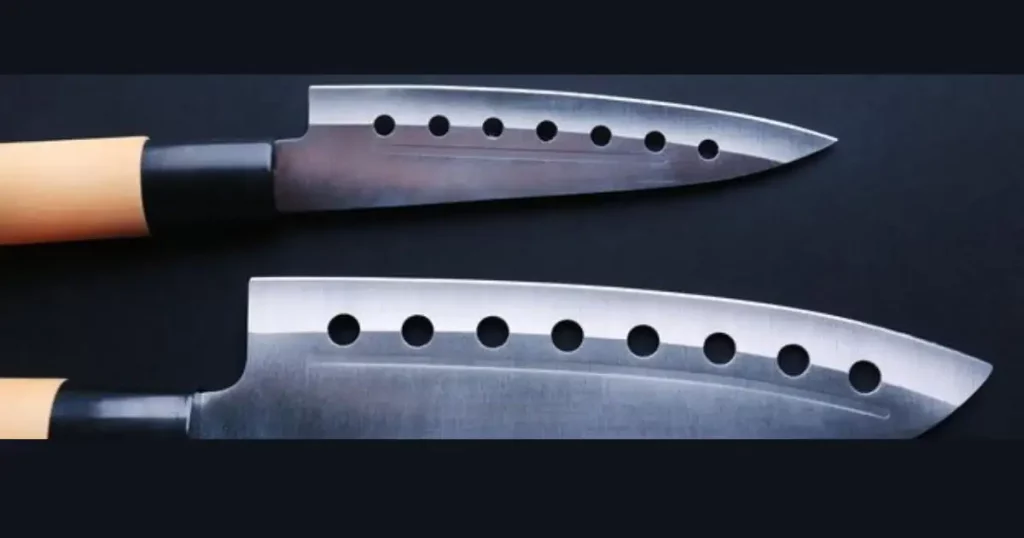
The presence of holes in knife blades serves several functions, ranging from practical benefits in cutting efficiency to enhancing the overall performance and maintenance of the knife. Here are the key functions of holes in knife blades:
Reduced Air Resistance:
- Holes in the blade contribute to reduced air resistance during cutting. This is particularly beneficial in fast or repetitive cutting motions.
- Improved aerodynamics can enhance the overall speed and efficiency of the knife, making it easier to perform slicing and chopping tasks.
Enhanced Balance and Control:
- Holes strategically placed on the blade can affect the knife’s balance. This contributes to a more evenly distributed weight, providing better control and manoeuvrability during use.
- Improved balance is especially advantageous in precision cutting tasks, allowing the user to maintain better control over the knife.
Heat and Friction Reduction:
- The holes in a knife blade facilitate heat dissipation during cutting, especially in high-friction situations.
- Reduced friction helps to preserve the sharpness of the blade, as less heat is generated during cutting. This is particularly important for maintaining the edge of the knife over time.
Prevention of Food Sticking:
- In kitchen knives such as chef’s knives and Santoku knives, holes or flutes along the blade help prevent food from sticking during slicing.
- The perforations create air pockets, minimizing the surface area in contact with the food and reducing the likelihood of ingredients adhering to the blade.
Ease of Cleaning:
- Holes in the blade design make cleaning the knife easier. Food particles are less likely to get trapped in crevices, and the increased surface area facilitates quick and thorough cleaning.
- Kitchen knives with holes are often preferred for their practicality and ease of maintenance.
Weight Reduction:
- Holes contribute to weight reduction in the blade, making the knife lighter and potentially more comfortable for extended use.
- Lighter knives can be advantageous in certain applications, such as outdoor activities or when users prefer a nimble and agile cutting tool.
Distinct Aesthetics:
- While not strictly functional, the presence of holes in knife blades can contribute to the overall aesthetics and visual appeal of the knife.
- Some knife designs incorporate holes as a distinctive feature, enhancing the knife’s uniqueness and style.
Customization and branding:
- Knife manufacturers may use hole patterns as a form of branding or customization, making their knives easily recognizable on the market.
- Distinctive hole designs can become a signature element for specific brands or knife models.
Do specific tasks and techniques benefit from blades equipped with holes?
Knives with hole-equipped blades offer advantages in various tasks and techniques, enhancing the overall performance and user experience. Here are specific tasks and techniques that benefit from knives with holes:
Precision Slicing:
- When precision is crucial, such as in delicate slicing of fruits, vegetables, or boneless meats, knives with holes provide improved control.
- The reduced air resistance and enhanced balance from the holes contribute to cleaner, more precise cuts.
Reducing Friction in Dense Foods:
- Holes in the blade design are beneficial when cutting through dense or sticky foods, such as cheeses or moist fruits.
- The reduced friction minimizes the likelihood of food sticking to the blade, allowing for smoother and more efficient cutting.
Chopping and rocking motions:
- Kitchen knives with holes are advantageous in chopping and rocking motions, commonly used in tasks like mincing herbs or chopping vegetables.
- The improved aerodynamics and balance make it easier for users to execute repetitive chopping motions comfortably.
Filleting Fish:
- Filleting knives with holes are beneficial for precise fish filleting.
- The reduced friction allows for smoother and more controlled movements, aiding in the removal of skin and bones while preserving the integrity of the fillet.
Speed and Efficiency in Professional Kitchens:
- Professional chefs in high-paced kitchen environments benefit from knives with holes due to improved speed and efficiency.
- The combination of reduced air resistance and balanced design facilitates rapid and accurate cutting, enabling chefs to work more efficiently.
Outdoor and Survival Activities:
- Knives with holes in outdoor or survival settings contribute to reduced weight and enhanced agility.
- The aerodynamic benefits are particularly useful in scenarios where quick and precise cutting is required, such as when crafting makeshift tools or preparing firewood.
One-Handed Opening in Folding Knives:
- Folding knives with holes, such as those with a thumb hole or a “Spyderco hole,” allow for easy one-handed opening.
- The hole serves as a convenient mechanism for users to quickly deploy the blade, making these knives popular for everyday carry and tactical purposes.
Throwing Knives:
- Throwing knives with holes may alter the balance and aerodynamics, contributing to improved accuracy during knife-throwing activities.
- The specific hole patterns may be designed to enhance the knife’s flight dynamics.
Reduced Fatigue in Prolonged Use:
- The reduced weight and balanced design of knives with holes contribute to less user fatigue during prolonged use.
- This is particularly beneficial in scenarios where users may need to perform repetitive cutting tasks for extended periods.
Conclusion
In conclusion, the presence of holes in knife blades transcends mere aesthetics, representing a convergence of form and function that has evolved over centuries. The journey through the historical roots, cultural influences, and functional intricacies of knives with holes reveals a dynamic interplay between tradition and innovation.
From the early days of utilitarian tools to the intricate designs of today, the evolution of knife design and functionality mirrors the changing needs of diverse societies. Cultural influences have left an indelible mark, shaping not only the physical appearance of knives but also imbuing them with symbolism and significance.
The specific tasks and techniques benefiting from hole-equipped blades underscore the practical advantages of this design feature. Whether in the culinary realm, outdoor activities, or tactical applications, knives with holes enhance precision, reduce friction, and offer a level of control that resonates with both professionals and enthusiasts alike.
As we navigate the landscape of perforated blades, it becomes clear that the holes serve as more than mere voids; they are deliberate elements contributing to a knife’s overall efficiency, balance, and ease of use. The reduced air resistance, improved heat dissipation, and distinctive aesthetics make knives with holes a unique and valuable tool in the hands of those who appreciate the nuances of cutting instruments.
In a world where innovation continues to push the boundaries of craftsmanship, knives with holes stand as a testament to the enduring marriage of tradition and modernity. As we close this exploration into the mysteries of perforated blades, we invite you to appreciate the artistry, functionality, and cultural tapestry that collectively define knives with holes—an embodiment of the ever-evolving craft at the intersection of form and function.
FAQ
Q: Why do some knives have holes in their blades?
- A: The holes in knife blades serve various functions, including reducing air resistance, improving balance, and facilitating heat dissipation during cutting. These design features contribute to enhanced performance and the user experience.
Q: Are there specific tasks that benefit more from knives with holes?
- A: Yes, tasks such as precision slicing, chopping, and filleting can benefit from knives with holes due to improved control, reduced friction, and enhanced balance. Additionally, one-handed opening when folding knives and reduced fatigue during prolonged use are notable advantages.
Q: How do the holes in the blade contribute to easier cleaning?
- The holes create additional access points, making it easier to clean the blade thoroughly. Food particles are less likely to get trapped in crevices, simplifying maintenance and contributing to overall cleanliness.
Q: Are knives with holes suitable for professional use?
- A: Yes, knives with holes are commonly used in professional settings, particularly in the culinary industry. The enhanced speed, precision, and reduced fatigue make them valuable tools for chefs and other professionals who rely on knives for their work.
Q: Can knives with holes be used for throwing activities?
- A: Yes, some throwing knives feature holes to alter their balance and aerodynamics, contributing to improved accuracy during knife throwing. However, the specific design and intended use may vary among different throwing knife model

